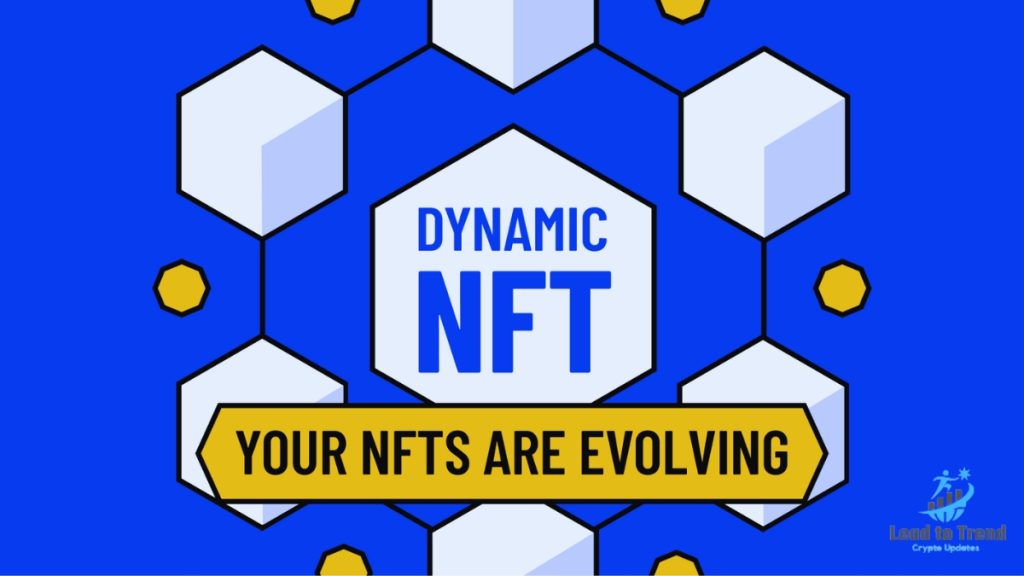What Are Dynamic NFTs? Understanding the Evolving NFT. There has been an increase in the variety of applications for NFTs as their popularity has increased. As digital assets develop, discussions regarding a new type of NFT called dynamic NFTs are gaining traction. Dynamic NFTs, in contrast to the more common static NFTs, can evolve.
What is an NFT?
A non-fungible token, also known as an NFT, is a type of cryptographic token that can be used on a blockchain to provide evidence of ownership of a digital or physical object. There are a few critical bits of information that set this cryptocurrency asset apart from all the others. These components include the address of the contract and the token ID. Because each NFT is unique, you cannot just replace one NFT with another.
The address of the non-fungible token’s smart contract, often stored on the Ethereum blockchain, is known as the contract address. When certain conditions are satisfied, a smart contract can carry out the delegated tasks independently—eliminating the requirement for the involvement of an intermediary or other third party. The token ID of an NFT is the individual numeric identifier of the token.
Static vs. dynamic NFTs

For some NFTs, the information tied to a token cannot be modified once it has been added to a blockchain. If you were to mint a rare, one-of-a-kind work of art as an NFT, the digital image and data connected with it would never change, regardless of the passage of time or the number of times it changed hands. On the other hand, a dynamic NFT is a type of NFT that varies based on external conditions. Also known as a “living NFT,” the token includes attributes that can be triggered to change according to an event or achievement. If you’re a gamer, for instance, you can customize your NFT avatar to reflect your in-game achievements.
Once “minted,” the NFT is “static” if the JPEG image or MP4 video remains unmodified. Creating a non-fungible token (NFT) that cannot be modified makes it static. Any NFT information changes can update the token’s look. The metadata of an NFT contains its name, description, attributes, and transactions. NFT metadata is often saved off-chain in a JSON file.
The token ID and contract address of a newly created NFT are immutable. While it is possible to change an NFT’s metadata after completion, it is not without its challenges and usually necessitates some familiarity with the underlying technology. This means that many already-existing NFTs are unchanging.
NFT art projects, play-to-earn games, and digital collectibles have all benefited from this static NFT model. Its utility is limited for projects that need to regularly update aspects of their metadata, such as real-world assets, blockchain-based fantasy sports leagues, and progression-based video games. This is where the concept of dynamic NFTs enters in.
How does a dynamic NFT work?

The information in dynamic NFTs is stored in a way that allows for subsequent changes. While static NFTs are commonly created using the ERC-721 token standard, dynamic NFTs employ the ERC-1155 standard. The term “semi-fungible” describes this kind of token standard because it can be altered if necessary. A smart contract can initiate modifications to a dynamic NFT. The NFT’s metadata is updated whenever an oracle sends a smart contract, which can trigger changes to a dynamic NFTran,, and other attributes will be modernized.
Examples of dynamic NFTs
Mike Winkelmann (aka Beeple) created a dynamic NFT in the form of a unique artwork in the early 2000s called “Crossroad.” It was made before the 2020 presidential election. A smart contract can trigger changes to a dynamic NFT outcome. After Joe Biden took office, the image was updated to show a defeated Donald Trump lying in a heap.
Another well-known application of NFTs is the viral game Cryptokitties. Digital cats can be bought, sold, and bred within the game. The NFTs used to depict individual cats are interactive, allowing pet owners to change details like their feline’s genetic makeup, temperament, and physical attributes.
LaMelo Ball, a rising player in the National Basketball Association, has digital collectibles that are interactive NFTs. The NFTs are updated with on-chain sports data and the game’s result. Some of the NFT collection’s avatars, for instance, might change appearance if a player amasses more than 1,000 points in a season. Notably, the Gold Evolve NFT guaranteed a different dNFT design if Ball was named NBA Rookie of the Year in 2023. The NBA star’s victory marked a turning point for the NFT.
Five short films will be released as interactive NFTs by Regenerative Resources. A company is working to restore degraded land and turn it into productive seawater landscapes in October 2023. Each short film will initially include a single frame, but the token holder will gain access to more structures with each purchase or resale.


